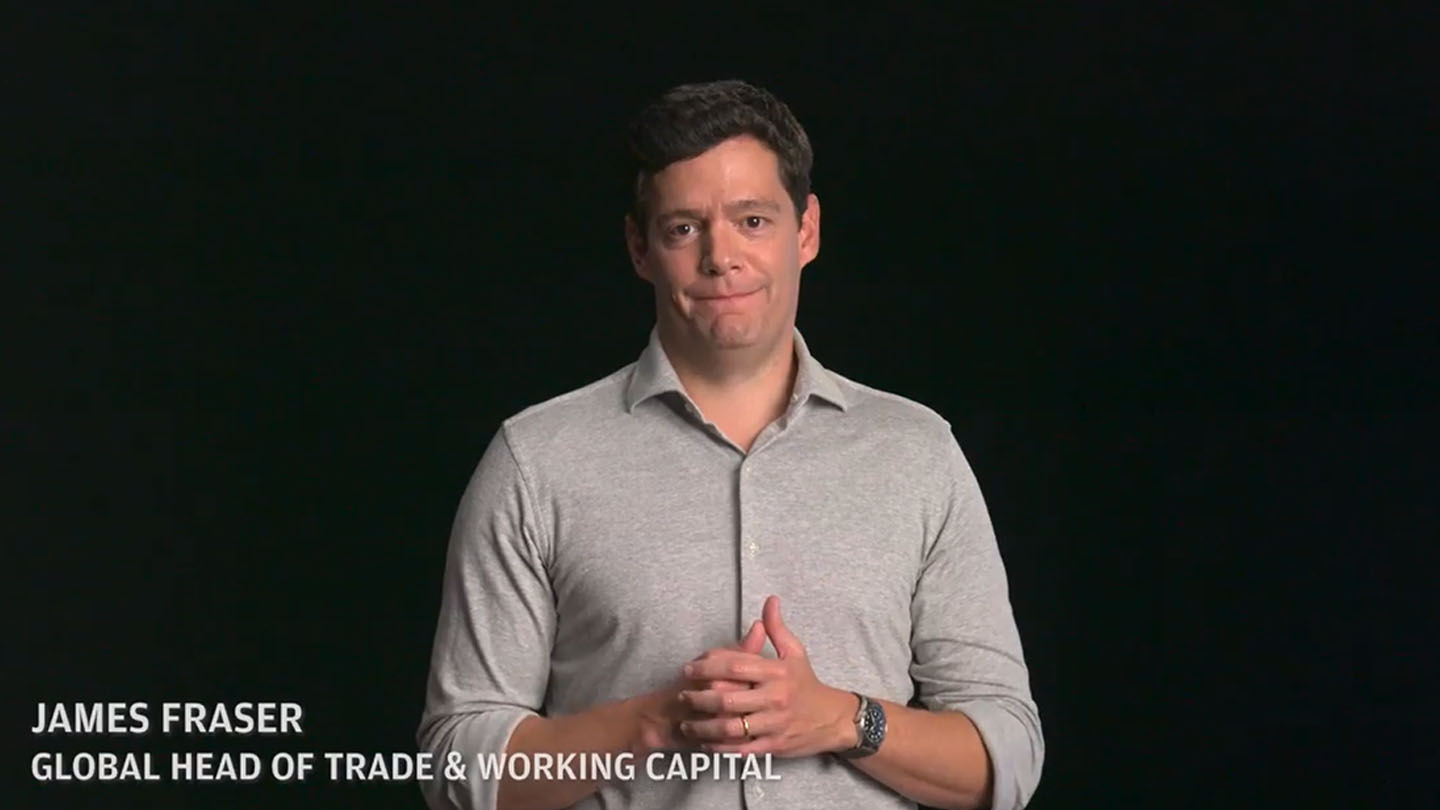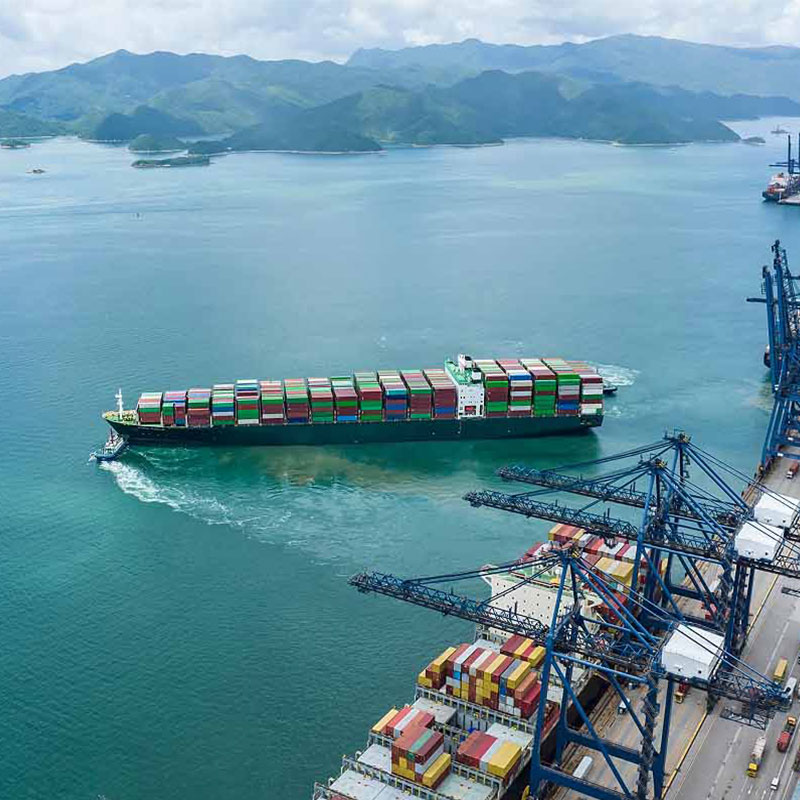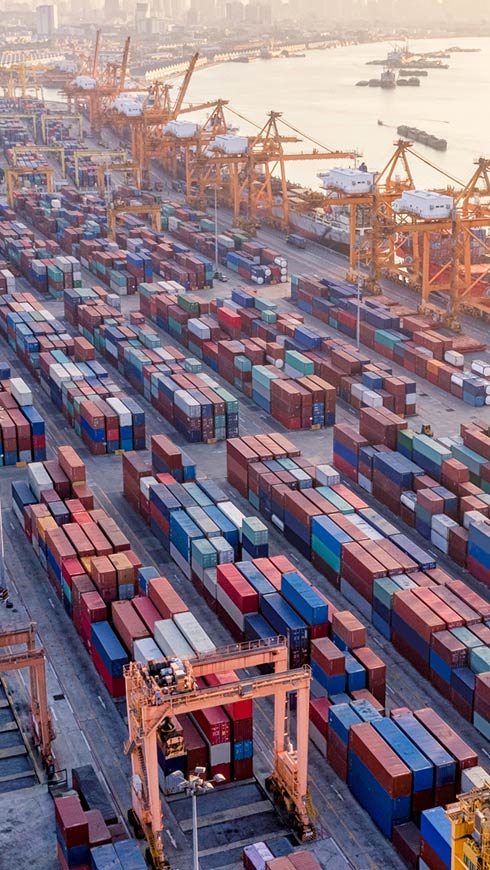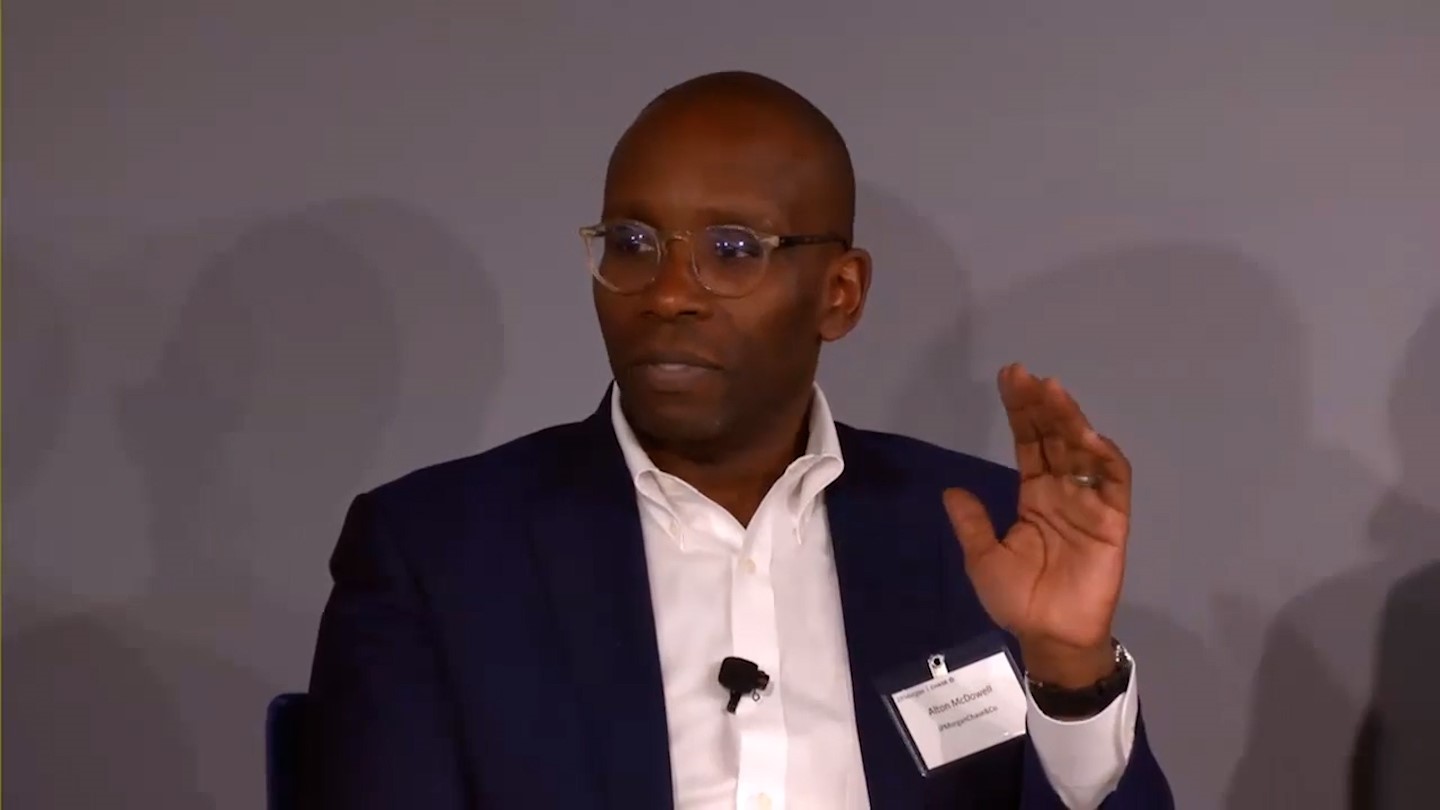[MUSIC PLAYING]
Welcome to Talks of the Trade. I'm your host James Fraser. Around the world, markets and cross border trade flows are increasingly vulnerable to geopolitical risk. From emerging regional conflicts, to global health crises, to new regulatory regimes, these factors can send shock waves through markets, impacting cost and access to capital, as well as overall economic stability.
My guest today is Peter Zeihan, geopolitical strategist thinker and futurist. Peter, welcome to the show.
Thank you.
I've been a fan of your work going back to your days at Stratfor.
Oh, so you're the one.
Yes. When we look at the post World War II era, we had multi-decade run of increased globalization. We saw the industrialization of China and India. And clearly, we're now in a period of heightened geopolitical tensions. We are seeing a trend of de-globalization begin to emerge.
What was the catalyst that transitioned us out of that period of globalization to where we are today? if
You're looking for the ultimate cause, you have to go back to the beginning. When we started the globalized period, people moved off the farm and into the cities. And when you do that, kids go from being free labor to an expense.
So we had fewer of them. You play that forward 70 years, and it's not that most of the advanced world is running out of children. That happened 30, 40 years ago. This is the decade we're running out of working aged adults.
And that process didn't just happen in the rich world. It happened in the developing world, too. And it happened more quickly. So we're running out of the young people that drive consumption in labor markets.
And we're running out of the more mature adults that drive capital markets. And we flip on all those measures this decade. We no longer have the population structure that's necessary to support a global trading system. And so it all breaks down this decade.
OK, so demographics, obviously, play a key role, particularly as we look forward. What are the countries where the problem is most acute?
I would say the big four, Korea, China, Italy, and Germany. These are the places where the urbanization process was most aggressive, and happened most quickly, and most holistically. And so these are places that there's no longer even theoretically enough people under age 40 to generate the next generation.
So the process that in North America has taken us 200 years of lower birth rates to get to where we are now, Brazil did in 40. China did in 25. And that gets you huge growth as you urbanize, but you only urbanize once.
And now we're getting to the other side of that equation. And we're discovering that for all of our failings in the developed world, the developing world is aging so much faster. And so the first major country to face national oblivion will probably be the People's Republic of China.
So we've not seen this before, and the demographic situation we have never seen. When we industrialized, one of the many, many, many impacts was health care. And so lifespans doubled, which means populations doubled, even though birth rates collapsed.
And so we're now on the other side of that where populations are moving into mass retirement. And there's just nothing below to support it. We've never seen anything even remotely like that.
It's challenging to pick up a newspaper and not read about the emergence of challenges to the United States dollar. When we look at international trade data, it suggests the share of dollar-based trade has actually increased in the last two years. What's your view on that trend going forward for the next five years?
Most of the diversification in currency markets has been away from the euro for the last 20 years. People are actually looking at the yen as a store of value. And so we've got this weird obsession in the United States at the end is nigh. It's part of what drives American culture, is feeling that we're in the very edge.
But the reality is just radically different. The United States is the largest consumption-driven system in the world. It's the least involved in international trade of the major economies. And if you want to trade currency, you want one that is not going to be manipulated by its government on a regular basis.
There is no pretender to the throne. The euro is functionally gone. The Chinese yuan is not tradable, and never will be. The next country down in terms of size that is a viable option is the Canadian dollar.
When we look at some of the required production, particularly on commodities ranging from copper to lithium to support transition goals, what is your view on our capacity to meet those production targets?
The smart play would be to take the technologies we have today and look at the geographies where they work. So wind turbines in the Great Plains, solar in the Southwest, and then run high voltage lines from those production zones to where we actually live. That's not enough to hit anywhere near net zero.
But it's not nothing. And with the technology we have today, that's where we should focus in an environment of limited materials, limited labor, limited capital. Now whether the political system will allow that is another issue.
One of the things that people have missed-- it's not just that the green transition is expensive-- it's that it all has to be financed. When you have a natural gas or a coal plant, about 80% of the full cycle life is the fuel. And so it's a pay as you go subscription model.
But if you're going to do a wind farm-- the advantage of wind is there's no fuel. But 2/3 of the cost, you have to pay before you get your first electron. And so that all has to be financed. We've seen capital costs triple in the last three years.
They're going to triple again in the next three years. So the math that people have done to figure out how to finance all of this is already broken. And we're seeing projects abandoned because of it.
The only way you can get that money to go in is for the government to step in and subsidize it. If the government is subsidizing that, they're not subsidizing other things because we're in an environment of limited capital. We have to choose.
As we look out. And obviously, we now have a conflict in the Middle East, so what's old is new again. Where should we be looking next? Not necessarily the next war, but where do you see the risk?
No matter how the Ukraine war evolves, it is going to involve more players. Either Ukraine is going to fall. And the next tier of countries involves a number of NATO countries, including Poland.
Or, Russia falls, and the war goes East and crosses into Russia proper. So we're only at the very beginnings of the process here, which means that anything that straddles that zone in terms of material processing or raw material exports, of which natural gas and oil are the top two, but it also includes timber.
It also includes neon. It also includes the palladium group or the platinum group metals. It's a long list. All of that is in chronic danger. In the Middle East, the war was nudged a little bit by the Iranians because they saw normalization between the Israelis and the Saudis as being on the horizon.
And if that would have worked, the whole Arab world would have basically been in a single bloc against Iran. For Iran, that's the nightmare. We're getting very close to the point where the Iranians are going to have to pull out a more conventional military card to prevent that sort of alignment.
And that means a war in the Persian Gulf. Well, that's the world's single largest source of internationally traded crude, not a big problem for the United States. We're independent. Everyone else, that's a bit of a disaster.
You give a lot of advice to the investor community. We spend a lot of time with our corporate client base, many of which have multinational operations. Therefore, must constantly be focused on risk to their supply chain. In light of that forward view or, at least, the risks within that forward view, what would your advice be to multinational corporates?
In terms of multinational corporates, it's got to be the China angle. I mean, even if we nail relations, and we go back to a co-Dominion, if that's the right word, where Beijing and Washington agree to disagree and build a more productive economic relationship, that's a real reach, by the way.
It just still doesn't address the demographic problem, at all. So anything that you're dependent upon China for, you have to count on that disappearing over the course of the next three to 10 years. And I'm already seeing from a lot of industries how they are already on a four-year wait list for things like transformers.
Every day that China doesn't break now is a gift because it gives us a day to metabolize some of their industrial capacity for us to prepare for what's next. It's like we're doing the 1990s and the 2000 in reverse. It used to be that the Chinese would buy equipment in order to build out their industrial system. And now we're going the other direction. And the more we front load, the easier this is going to be.
We've seen the US and Mexico industrial buildup out to take production onshore, nearshore. Are there other countries, particularly in East Asia, that have the capacity to absorb some of that?
Oh, certainly. Well, let's start really close to home. So obviously, northern Mexico is already heavily integrated. Central Mexico is now the relatively low hanging fruit. There's progress being made there.
Faster would always be better, but we've started. The progress we're seeing in places like the prairies is actually really impressive in things like food processing, which doesn't sound very sexy, until you realize it's probably going to save 100 million people.
Ontario is in the process of retooling a lot of their auto sector as that sector changes. So the Canadians really are stepping up to the bar on this one. Colombia is, I think, the next one on the horizon to watch. Northern Mexican labor has become so highly skilled that they now need a low skill partner.
Columbia is the closest country that kind of matches the infrastructure, the distance, and labor force structure that Mexico needs. Mexico now needs a new Mexico. It's going to be Columbia. Southeast Asia, big fan.
Countries like Vietnam have a great demographic structure. They have an educational system that is among the best on the planet. 40% of their college grads are STEM. That doesn't happen normally. And if you combine it with one of the youngest demographic profiles, this is a country that will probably leapfrog China technologically over the course of this decade, even if China doesn't break.
So you've got this network within the region with relatively low skilled labor in places like Indonesia, mid-skilled in places like Thailand, or Malaysia. And the real high end in places like Singapore, which honestly put us to shame when it comes to technology who already have their own trading network.
We're tied on capital. Transportation, increasingly an issue. What's your view on food security? It came into focus with wheat, seed oils, Ukraine, Russia. Where are we going from here? Is this something we should be concerned about?
Pre-globalization, the bulk of the world's exportable foodstuffs came from a very small list of temperate zone arable countries. The United States, France being the top two. But others in that elevation-- I'm sorry-- others in that latitude band.
With globalization, we had two things happen. Number one, we created an environment of security that would allow lower productivity lands to come into play because they, all of a sudden, didn't have to defend their borders. And second, with industrialization, we got the industrial level inputs to take subpar land and bring it into production.
If you apply fertilizer to Iowa, you're going to double yields. If you apply fertilizer to Germany, you're going to quintuple them. They still won't be equal. Iowa will still be ahead.
But you can take places that could not grow food normally and make them do very well. That is 100% the success story of places like Brazil. If you remove the fertilizer, Brazil produces nothing. And so globalization has increased the food supply of the planet by roughly a factor of 3.
You de-globalize, and a lot of that falls away. I think if we're really, really lucky with some dietary changes, we might be able to feed 7 billion. That's still in absolute terms the greatest famine in terms of numbers and reach that humanity has ever experienced.
What are the areas where you see that today's production declining?
Brazil and China being the two big ones. Brazil's land has very little Indigenous nutrient content. They're completely dependent upon fertilizer that comes from a different continent.
And you break down the Russian system in any meaningful way, it's not just a major exporter of food. It's a major exporter of the fertilizer. So even stagnancy there is a disaster for everyone else.
OK, Peter. I want to put you in my seat. You are working for a financial institution.
Oh, do you?
I do, indeed. You have oversight of a international franchise focused on global trade. What are you focused on? What do you worry about?
Mexico. They don't have a financial market in the way we define the term. Right now, the trade relationship is largely personal based on individual companies in the United States largely Texas having personal relationships with individuals on the other side of the border, primarily the northern border. Considering the scope of the expansion we need to do, parts of our financial network need to cross the border in a way that we bring rule of law with us.
That's a model we're not used to. Right now, I'm oversimplifying here, but it's direct investment in cash. And that's not going to give us the speed that we need. Now that's not necessarily a bad thing.
In an environment where capital is constrained, the companies that have access to the capital, have the keys to the kingdom. And you will find takers who are willing to accept your terms. If not in Northern Mexico, Central Mexico.
If not in Central Mexico, Vietnam. If not in Vietnam, Thailand. There is all kinds of opportunities here. And whoever controls the limiting factor, capital, labor, they can kind of punch their own ticket.
Thank you, Peter. I want to thank you for coming on and having the conversation today. I feel certainly more enlightened coming out of it, maybe a little bit gloomier, as well. But I look forward to seeing you again, soon.
Hey, we're looking at the fastest economic expansion in the history of the United States. This is a good story. It's just kind of a stressful one.
[MUSIC PLAYING]













